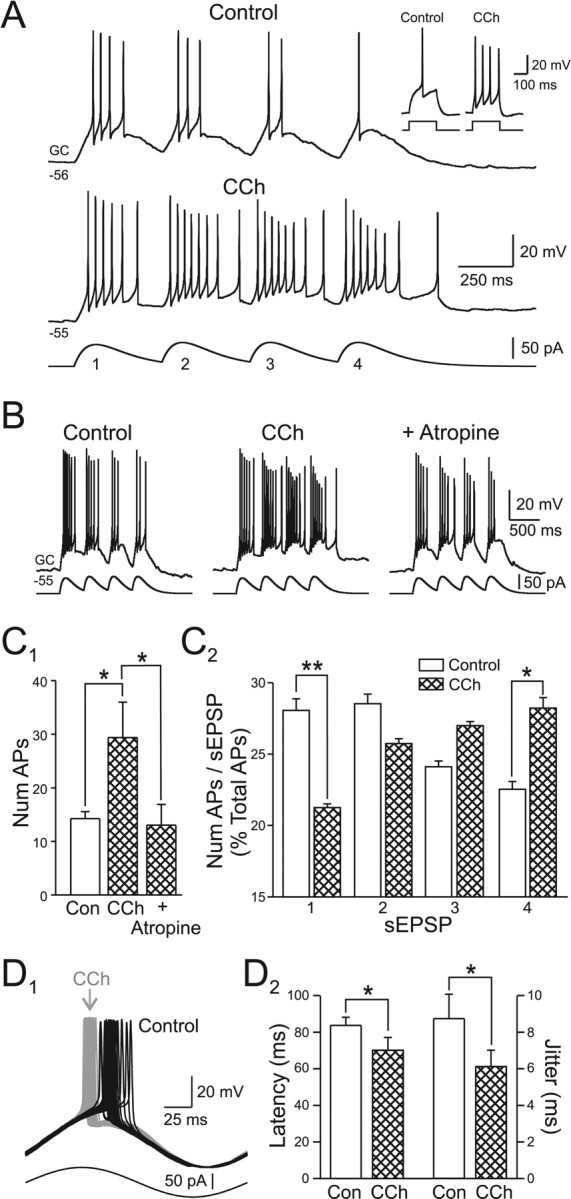Figure 5.

Muscarinic receptor activation prolongs granule cell responses to phasic excitatory input. A, Granule cell responses to a train of four simulated EPSPs (sEPSP; α function; tau = 100 ms) are increased in CCh (2 μm). The inset shows the effect of CCh on the step response recorded in the same granule cell. B, Bath application of 5 μm atropine reversed the facilitating effect of CCh. C1, CCh significantly increased the total number of action potentials evoked by the four sEPSP train. This effect was abolished by 5 μm atropine. *p < 0.05. C2, CCh also decreased the percentage of action potentials evoked by the first sEPSP and increased the percentage triggered by the last sEPSP. *p < 0.05; **p < 0.01. The number of action potentials calculated over windows of 400 ms aligned to the onset of each sEPSP. D1, Bath application of 2 μm CCh reduced the latency granule cells discharge in response to a 5 Hz sine wave stimulus and decreased latency jitter. Control responses in black, responses in CCh shown in gray. D2, Summary of 2 μm CCh-induced changes in AP latency and jitter (SD of latency) after 5 Hz sine wave stimulation in three experiments. *p < 0.05.
